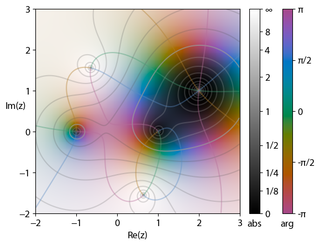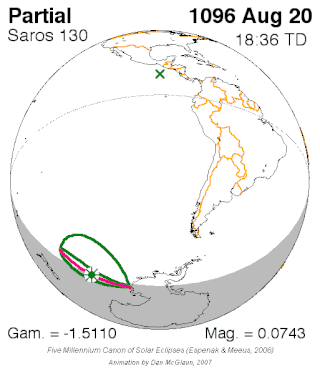
Scientific visualization is an interdisciplinary branch of science concerned with the visualization of scientific phenomena. It is also considered a subset of computer graphics, a branch of computer science. The purpose of scientific visualization is to graphically illustrate scientific data to enable scientists to understand, illustrate, and glean insight from their data. Research into how people read and misread various types of visualizations is helping to determine what types and features of visualizations are most understandable and effective in conveying information.

Visualization or visualisation is any technique for creating images, diagrams, or animations to communicate a message. Visualization through visual imagery has been an effective way to communicate both abstract and concrete ideas since the dawn of humanity. from history include cave paintings, Egyptian hieroglyphs, Greek geometry, and Leonardo da Vinci's revolutionary methods of technical drawing for engineering and scientific purposes.
A stem-and-leaf display or stem-and-leaf plot is a device for presenting quantitative data in a graphical format, similar to a histogram, to assist in visualizing the shape of a distribution. They evolved from Arthur Bowley's work in the early 1900s, and are useful tools in exploratory data analysis. Stemplots became more commonly used in the 1980s after the publication of John Tukey's book on exploratory data analysis in 1977. The popularity during those years is attributable to their use of monospaced (typewriter) typestyles that allowed computer technology of the time to easily produce the graphics. Modern computers' superior graphic capabilities have meant these techniques are less often used.

Infographics are graphic visual representations of information, data, or knowledge intended to present information quickly and clearly. They can improve cognition by using graphics to enhance the human visual system's ability to see patterns and trends. Similar pursuits are information visualization, data visualization, statistical graphics, information design, or information architecture. Infographics have evolved in recent years to be for mass communication, and thus are designed with fewer assumptions about the readers' knowledge base than other types of visualizations. Isotypes are an early example of infographics conveying information quickly and easily to the masses.

Data and information visualization is the practice of designing and creating easy-to-communicate and easy-to-understand graphic or visual representations of a large amount of complex quantitative and qualitative data and information with the help of static, dynamic or interactive visual items. Typically based on data and information collected from a certain domain of expertise, these visualizations are intended for a broader audience to help them visually explore and discover, quickly understand, interpret and gain important insights into otherwise difficult-to-identify structures, relationships, correlations, local and global patterns, trends, variations, constancy, clusters, outliers and unusual groupings within data. When intended for the general public to convey a concise version of known, specific information in a clear and engaging manner, it is typically called information graphics.

In complex analysis, domain coloring or a color wheel graph is a technique for visualizing complex functions by assigning a color to each point of the complex plane. By assigning points on the complex plane to different colors and brightness, domain coloring allows for a function from the complex plane to itself — whose graph would normally require four space dimensions — to be easily represented and understood. This provides insight to the fluidity of complex functions and shows natural geometric extensions of real functions.
A dot chart or dot plot is a statistical chart consisting of data points plotted on a fairly simple scale, typically using filled in circles. There are two common, yet very different, versions of the dot chart. The first has been used in hand-drawn graphs to depict distributions going back to 1884. The other version is described by William S. Cleveland as an alternative to the bar chart, in which dots are used to depict the quantitative values associated with categorical variables.
GGobi is a free statistical software tool for interactive data visualization. GGobi allows extensive exploration of the data with Interactive dynamic graphics. It is also a tool for looking at multivariate data. R can be used in sync with GGobi. The GGobi software can be embedded as a library in other programs and program packages using an application programming interface (API) or as an add-on to existing languages and scripting environments, e.g., with the R command line or from a Perl or Python scripts. GGobi prides itself on its ability to link multiple graphs together.
Statistical graphics, also known as statistical graphical techniques, are graphics used in the field of statistics for data visualization.

Saros cycle series 111 for solar eclipses occurred at the Moon's ascending node, repeating every 18 years and 11 days, and contained 79 events.

Saros cycle series 124 for solar eclipses occurs at the Moon's descending node, repeating every 18 years, 11 days, containing 73 events. All eclipses in this series occurs at the Moon's descending node.

Saros cycle series 127 for solar eclipses occurs at the Moon's ascending node, repeating every 18 years, 11 days, containing 82 events. All eclipses in this series occurs at the Moon's ascending node.

Saros cycle series 130 for solar eclipses occurs at the Moon's descending node, repeating every 18 years, 11 days, containing 73 events. All eclipses in this series occurs at the Moon's descending node.

Saros cycle series 131 for solar eclipses occurs at the Moon's ascending node, repeating every 18 years, 11 days, containing 70 events. All eclipses in this series occurs at the Moon's ascending node.
Saros cycle series 154 for solar eclipses occurs at the Moon's descending node, repeating every 18 years, 11 days, containing 71 events, with 61 before 3000 AD. All eclipses in this series occurs at the Moon's descending node.
Saros cycle series 159 for solar eclipses occurs at the Moon's ascending node, repeating every 18 years, 11 days, containing 49 events before 3000 AD. All eclipses in this series occurs at the Moon's ascending node.
Saros cycle series 160 for solar eclipses occurs at the Moon's descending node, repeating every 18 years, 11 days, containing 46 events before 3000 AD. All eclipses in this series occurs at the Moon's descending node.

Google Fusion Tables was a web service provided by Google for data management. Fusion tables was used for gathering, visualising and sharing data tables. Data are stored in multiple tables that Internet users can view and download.
D3.js is a JavaScript library for producing dynamic, interactive data visualizations in web browsers. It makes use of Scalable Vector Graphics (SVG), HTML5, and Cascading Style Sheets (CSS) standards. It is the successor to the earlier Protovis framework. Its development was noted in 2011, as version 2.0.0 was released in August 2011. With the release of version 4.0.0 in June 2016, D3 was changed from a single library into a collection of smaller, modular libraries that can be used independently.

A sina plot is a type of diagram in which numerical data are depicted by points distributed in such a way that the width of the point distribution is proportional to the kernel density. Sina plots are similar to violin plots, but while violin plots depict kernel density, sina plots depict the points themselves. In some situations, sina plots may be preferable to violin plots, because sina plots contain more information.












